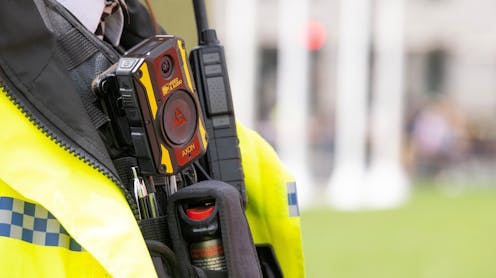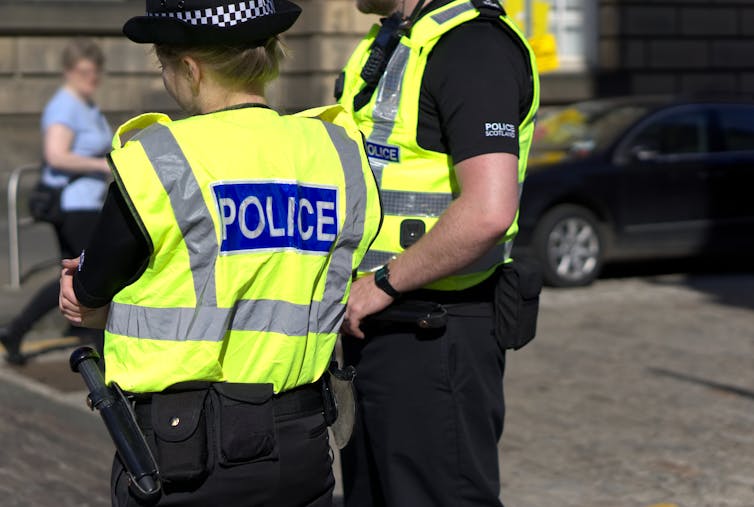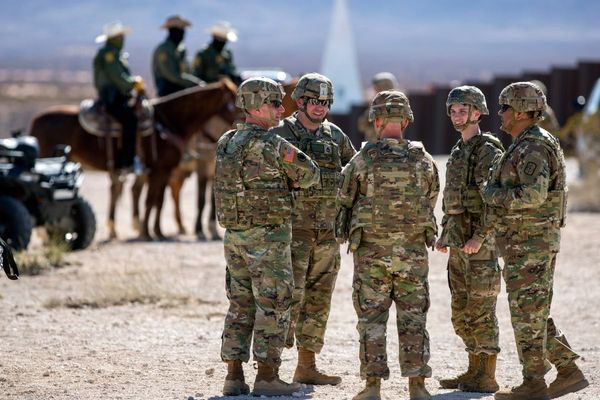
By autumn 2026, all frontline officers of the UK’s second largest police force will be expected to wear a camera while on duty, at a cost of over £13 million.
Police Scotland is one of the last forces in the UK to employ this technology nationally. It has been a requirement for armed officers in Scotland since it hosted the UN climate conference, Cop26, in 2021. Devon and Cornwall Police ran the first body-worn trial in Plymouth some 20 years ago.
The use of this technology was recommended by Lady Elish Angiolini (currently lord clerk register of Scotland) who led a 2020 independent review of complaints and misconduct in Scottish policing. The report argued that body-worn cameras have the potential to significantly reduce complaints against the police.
In theory, being late to the party means Police Scotland is in a position of strength. They can adopt recognised best practice from other police forces in the UK, while steering clear of mistakes. But our review of the evidence reveals how little is really known about the effectiveness of this technology.
Body-worn video promises to aid in evidence gathering, which can be used to support investigations and prosecutions. It is also seen to provide a level of personal protection for police officers, and increased transparency and accountability when it comes to police behaviour or misconduct.
But there are still uncertainties about its actual impact on society. The evidence base is relatively mixed and ambiguous, with mostly small-scale studies and anecdotal evidence.
Survey research shows there is significant public support for police using body-worn video, but this is mainly shaped by the technology’s perceived benefits.
Does body-worn video work?
Body-worn video is now commonplace in policing around the world. It is also seen to be critical equipment for security guards, traffic wardens and prison officers. It is even used by football referees, ticket inspectors, delivery drivers and healthcare and retail workers.
While it is now commonplace, there is a notable lack of robust evidence about the consequences of its use. A lot rests on the assumptions about what the technology will do.
There are no reliable measures capturing any reduction in violent incidents or levels of complaints about police behaviour.

An argument for the use of body-worn video is that it creates “objective” recorded accounts of interactions between police and citizens. In theory, the recordings can provide irrefutable proof about what happened, which in turn will enhance confidence in policing.
The Scottish Police Authority notes that video recordings can streamline the process of resolving complaints against officers. It also can enhance the quality of evidence and “reduces the number of officers required to attend court” in investigations.
However, the issue remains that officers may use their discretion to turn the cameras on or off. In 2023, a BBC investigation revealed more than 150 reports of camera misuse by officers in England and Wales. Forces need processes in place to prevent this and to hold officers accountable, or the digital account of an interaction will always be determined by the police.
There is some evidence that body-worn video can exacerbate existing racial tensions. Research from North America suggests minority groups do not believe that police body-worn video will make the police more accountable or transparent, and that they instead reinforce existing power structures in society. This can fracture already strained relations with the police.
Surveillance concerns
There are technical, legal and ethical challenges emerging from the capture and processing of personal data.
New body-worn video units, including those purchased by Police Scotland, also have the technical capability to integrate facial recognition software. If deployed, this would mean that the technology is no longer about a retrospective account of events, but a tool for live identity matching. This would significantly change the purpose and scope of the technology and how the police interact with citizens.
Live facial recognition divides opinion and is seen to discriminate against women and minority ethnic groups. There are also concerns about its effectiveness.
As we found in our research, police forces across the UK have different procedures for using this technology, and for holding officers accountable.
A few UK forces have set up technology-specific oversight mechanisms, for example independent scrutiny panels that include members of the public. But these mechanisms are the exception, not the norm. In Scotland, scrutiny will take place via the Scottish Police Authority using existing arrangements.
While we commend Police Scotland for the due caution they have exercised in delaying the national roll-out of this technology, our view is that technology-specific protocols and oversight mechanisms need to be in place at the earliest possible opportunity.
Police need to be trained properly in the operation of cameras or they risk capturing inappropriate personal data and encroaching on citizens’ privacy expectations.
William Webster has previously received funding from the Scottish Institute for Policing Research to undertake an evidence review into the police use of BWV.
Diana Miranda received funding from SIPR (Scottish Institute for Policing Research), and ESRC (Economic and Social Research Council) to investigate emerging policing technologies, namely body-worn video.
This article was originally published on The Conversation. Read the original article.







